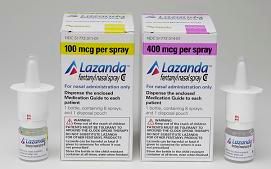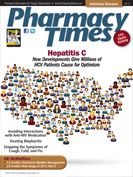Publication
Article
Pharmacy Times
New FDA Actions: Archimedes Pharma's Lazanda
Author(s):
The FDA approved Lazanda (fentanyl) nasal spray for the management of breakthrough pain in opioid-tolerant cancer patients 18 years or older.
The FDA approved Lazanda (fentanyl) nasal spray for the management of breakthrough pain in opioid-tolorant cancer patients 18 years or older.


Lazanda (fentanyl) nasal spray from Archimedes Pharma received approval from the FDA for the management of breakthrough pain in cancer patients 18 years and older who are currently receiving and tolerant to opioid medications for their cancer pain. 1
Lazanda’s approval carries an extensive boxed warning (see Contraindications, Warnings, and Precautions). It is available only through a Risk Evaluation and Mitigation Strategy (REMS) program; dispensing, distributing, and prescribing of Lazanda will be limited to pharmacies, distributors, and health care professionals who are enrolled in the program.
In the United States, Lazanda will be available as a 100 mcg/spray solution and a 400 mcg/spray solution. Each bottle will contain 8 sprays.1
Pharmacology and Pharmacokinetics
Lazanda exerts its analgesic properties as a pure opioid agonist.
Allergic rhinitis does not appear to impact the absorption of Lazanda; however, the use of oxymetazoline appears to lower the peak plasma concentration and delays the Tmax of Lazanda.1
Dosing and Administration
The dose of Lazanda should be titrated and is not predicted by the patient’s daily maintenance medication or dose. The initial starting dose is 100 mcg for all patients, including those who are switching from another fentanyl product. If the patient experiences adequate relief within 30 minutes of the dose, then the 100 mcg dose should be continued. If the pain is not relieved, then the dose can be subsequently increased to 200 mcg, then 400 mcg, then 800 mcg as needed and as tolerated. The patient must wait at least 2 hours between doses.
The maximum dose of Lazanda is a single spray in 1 or each nostril, with no more than 4 doses per day. If adequate pain relief is not obtained within 30 minutes, the patient may use an additional rescue medication as directed by their clinician.1
Clinical Trials
One clinical trial evaluated the role of Lazanda in opioidtolerant adult patients with breakthrough cancer pain. The trial included an open-label titration phase to determine a dose, ranging from 100 to 800 mcg, which relieved pain with tolerable side effects.
In the double-blind, placebo-controlled portion of the trial, patients who had been titrated to an adequate dose were randomized to receive a blinded series of 10 treatments, 7 of which were identified as Lazanda and 3 of which were placebo. The results showed a statistically significant reduction in pain intensity for the Lazanda doses as compared with the placebo doses.1,2
Contraindications, Warnings, and Precautions
Lazanda carries the following boxed warning:
Lazanda contains fentanyl, a Schedule II controlled substance with abuse potential similar to other opioid agonist agents. Its use is contraindicated in patients who are opioid nontolerant. In patients who are not taking chronic opioids, Lazanda may cause life-threatening respiratory depression at any dose. Lazanda is contraindicated as management of acute or postoperative pain. Lazanda is not interchangeable with other fentanyl products. Lazanda contains a quantity of fentanyl that can be fatal to a child; it must be kept out of children’s reach at all times. The use of Lazanda with strong cytochrome P450 3A4 inhibitors may cause potentially fatal respiratory depression.
Lazanda is only available through its REMS program. Lazanda is contraindicated for the management of headache, migraine, or dental pain, or for use in the emergency department. Its use is contraindicated in patients intolerant of or hypersensitive to any of its components.
Doses should be titrated cautiously in patients with chronic obstructive pulmonary disease or other conditions predisposing them to hypoventilation. Administer Lazanda is extremely cautiously in patients who are susceptible to intracranial effects of CO2 retention. Lazanda is classified as Pregnancy Category C and should not be used during breast-feeding. Lazanda should not be used in patients younger than 18 years. Use caution in patients with hepatic or renal impairment and in patients using vasoconstrictive nasal agents.
The most common adverse reactions during the titration phase (frequency ≥5%) included nausea, vomiting, and dizziness. The most common adverse reactions during the maintenance phase (frequency ≥5%) included vomiting, nausea, pyrexia, and constipation.1 PT
References
1. Lazanda complete prescribing information. www.lazanda.com/common/pdfs/Lazanda_Prescribing_Information.pdf. Accessed January 2012.
2. Archimedes Pharma launches Lazanda — the only fentanyl nasal spray for the management of breakthrough pain in cancer in the U.S. www.archimedespharma.com/pdfs/LazandaLaunchAnnouncementOct172011f.pdf. Accessed January 2012.
Dr. Holmberg is a pharmacist who resides in Phoenix, Arizona.







